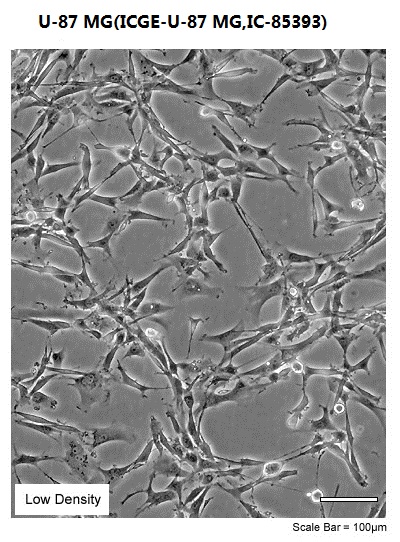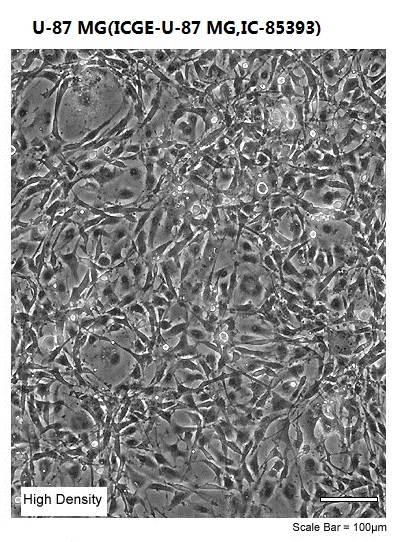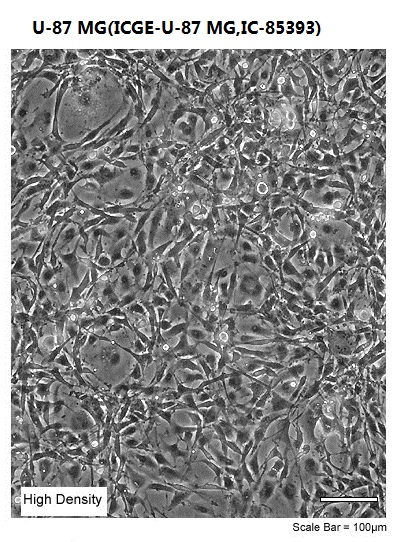


Overview
| Organism | Homo sapiens, human |
|---|---|
| Tissue | brain |
| Product Format | frozen |
| Morphology | epithelial |
| Culture Properties | adherent |
| Biosafety Level |
1
Biosafety classification is based on U.S. Public Health Service Guidelines, it is the responsibility of the customer to ensure that their facilities comply with biosafety regulations for their own country. |
| Disease | Likely glioblastoma |
| Age | unknown |
| Gender | male |
| Ethnicity | unknown |
| Applications |
This cell line is a suitable transfection host.
|
| Storage Conditions | liquid nitrogen vapor phase |
Properties
| Karyotype | This is a hypodiploid human cell line with the modal chromosome number of 44 occurring in 48% of cells. The rate of higher ploidy was 5.9%., Twelve markers were common to all cells, including der(1)t(1;3) (p22;q21), der(16)t(1;16) (p22;p12), del(9) (p13) and nine others. The marker der(1) had two copies in most cells. There was only one copy of normal X. N1, N6 and N9 were not found. |
|---|---|
|
|
|
| Derivation | This is one of a number of cell lines derived from malignant gliomas (see also ATCC® HTB-15™ and HTB-16™) by J. Ponten and associates from 1966 to 1969 (see also Allen, 2016). |
| Clinical Data | male |
| Tumorigenic | Yes |
| Effects |
Yes, in nude mice inoculated subcutaneously with 10(7) cells
|
| Comments |
Mycoplasma contamination was eliminated in September 1975.
The ATCC® HTB-14™ cell line was deposited at ATCC in 1982.
STR profiling, Y-chromosome paint, and Q-band assay confirmed that the cell line is male in origin. Based on current literature, the cell line is likely a glioblastoma of CNS origin (Allen, 2016).
|
Background
| Complete Growth Medium |
The base medium for this cell line is ATCC-formulated Eagle''''''''s Minimum Essential Medium, Catalog No. 30-2003. To make the complete growth medium, add the following components to the base medium: fetal bovine serum to a final concentration of 10%. |
|---|---|
| Subculturing |
Volumes used in this protocol are for 75 cm2 flasks; proportionally reduce or increase amount of dissociation medium for culture vessels of other sizes. Corning® T-75 flasks (catalog #430641) are recommended for subculturing this product.
Subcultivation Ratio: A subcultivation ratio of 1:2 to 1:5 is recommended
Medium Renewal: 2 to 3 times per week
|
| Cryopreservation |
Culture medium, 95%; DMSO, 5%
|
| Culture Conditions |
Atmosphere: 5% CO2 in air recommended
Temperature: 37��C
|


